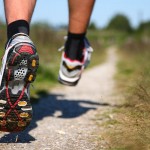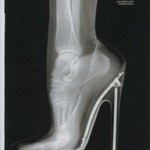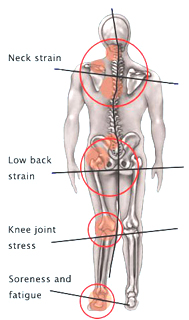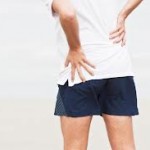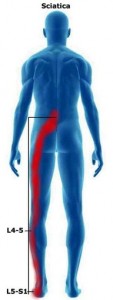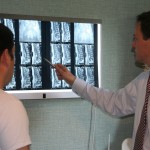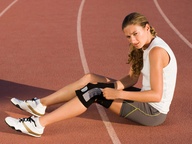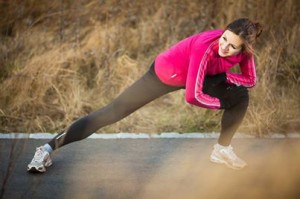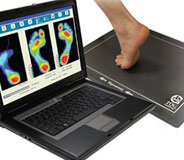google806791214bd30325.html
 Pain in your feet may be a sign of a serious condition called Plantar Fasciitis which is a very painful condition seen frequently at the Gorey Family Chiropractic Clinic resulting in pain specifically under the heel. This heel pain is often caused by overuse of the plantar fascia or arch tendons of the foot. It is a very common condition and can be difficult to treat if not looked after correctly.
Pain in your feet may be a sign of a serious condition called Plantar Fasciitis which is a very painful condition seen frequently at the Gorey Family Chiropractic Clinic resulting in pain specifically under the heel. This heel pain is often caused by overuse of the plantar fascia or arch tendons of the foot. It is a very common condition and can be difficult to treat if not looked after correctly.
Symptoms include:
- Heel pain, under the heel and usually on the inside, at the origin of the attachment of the fascia.
- Pain when pressing on the inside of the heel and sometimes along the arch
- Pain is usually worse first thing in the morning as the fascia tightens up overnight. After a few minutes it eases as the foot gets warmed up
- As the condition becomes more severe the pain can get worse throughout the day if activity continues.
- Sometimes there may also be pain along the outside border of the heel due to walking on the outside border of the foot.
What is Plantar Fasciitis?
The Plantar Fascia is a broad, thick band of tissue that runs from under the heel to the front of the foot. Inflammation of these tissues is termed Plantar Fasciitis.
It is sometimes associated with a heel spur, but the two conditions are not always connected.
What Causes Plantar Fasciitis?
Plantar fasciitis or heel spurs are common in sports which involve running, dancing or jumping. Runners who overpronate (feet rolling in or flattening) are prone to this injury as the biomechanics of their foot causes over stretching of the plantar fascia.
 One of the most common cause of plantar fasciitis is very tight calf muscles which produces repetitive over-stretching of the plantar fascia leading to probable thickening of the tendon. As the fascia thickens it looses flexibility and strength becoming inflamed and painful.
One of the most common cause of plantar fasciitis is very tight calf muscles which produces repetitive over-stretching of the plantar fascia leading to probable thickening of the tendon. As the fascia thickens it looses flexibility and strength becoming inflamed and painful.
Sometimes over pronation can only be seen with computerised foot scans, especially if the patient has a high arched foot. We can carry these out here at Gorey Family Chiropractic and prescribe Custom Made Orthotics if needed to correct the problem.
Other causes include low arch or high arched feet (pes planus / cavus) and other biomechanical abnormalities including oversupination which should be assessed with a foot scan and a chiropractic biomechanical examination.
Excessive walking in footwear which does not provide adequate arch support has been attributed to plantar fasciitis. Footwear for plantar fasciitis – both prevention and treatment – should be flat, lace-up and with good arch support and cushioning.
Overweight individuals are more at risk of developing the condition due to the excess weight impacting on the foot.
Plantar Fasciitis Treatment :
:
There is no single treatment for foot pain caused by plantar fasciitis; at Gorey Family Chiropractic we can help you to understand how to eliminate pain and we correct the underlying factors causing the condition. To treat it effectively long-term, the cause of the condition must be corrected and the symptoms dealt with.
What can the athlete do?
•Try to Rest the Foot from Active Exercise. It can be very difficult to rest the foot as most people will be on their feet during the day for work. By walking on the painful foot you are continually aggravating the injury and increasing inflammation.
•Apply Ice or Cold therapy to help reduce pain and inflammation. Cold therapy can be applied regularly until symptoms have resolved.
•Plantar Fasciitis Exercises – in particular stretching the plantar fascia and calf muscles is an important part of treatment and prevention. Simply reducing pain and inflammation alone is unlikely to result in long term recovery. Identifying the underlying cause will stop the inflammation coming back.
How Gorey Family Chiropractic Care Helps
 •We will perform gait analysis and scan your foot to determine if you overpronate or oversupinate and prescribe custom made orthotics or insoles if clinically necessary. An insole can restore normal foot biomechanics if overpronation is a problem.
•We will perform gait analysis and scan your foot to determine if you overpronate or oversupinate and prescribe custom made orthotics or insoles if clinically necessary. An insole can restore normal foot biomechanics if overpronation is a problem.
•Tape the foot with plantar fasciitis taping. This is an excellent way of allowing the foot to rest. A good plantar fasciitis taping technique can help support the foot relieving pain and helping it rest.
•Deep tissue massage to address fibrotic muscle adhesions. Active Release Soft Tissue treatment on the plantar fascia can successfully treat and ease the pain. The application of these soft tissue treatment techniques reduces the tension in the plantar fascia and also stretches the calf muscles.
•We will prescribe plantar fasciitis exercises to help stretch the fascia and strengthen it once pain free.
•We will check and correct of any pelvic lower back dysfunction which might be influencing way an individual walks in a negative way.
 X ray may sometimes be prescribed to see if there any other bony foot problems. Gorey Family Chiropractic offers rapid onsite X ray services for convenience where clinically necessary. An X-ray can show bony spurs, which are often a by product of plantar fasciitis and a cause of pain.
X ray may sometimes be prescribed to see if there any other bony foot problems. Gorey Family Chiropractic offers rapid onsite X ray services for convenience where clinically necessary. An X-ray can show bony spurs, which are often a by product of plantar fasciitis and a cause of pain.
Gorey Family Chiropractic Supporting your Recovery and Maintaining it
Here at Gorey Family Chiropractic we have helped many patients with the excruciating pain of plantar fasciitis using the correct combination of therapy for each particular case.
Feel free to email your enquiry or call us if you think you may be suffering from foot pain or heel pain caused by plantar fasciitis or other foot disorders.
For your convenience all of our Gorey Family Chiropractic team are registered with VHI, Glo, Aviva and Laya Healthcare allowing clients claim reimbursement from a wide range of private healthcare Insurance providers. We also provide care under the GAA injury scheme.
Opening hours Mon 8-7, Tues 9-5, Wed 8-7, Thurs 9-5, Frid 8-7
Tel: 053 94 83338 or alternatively email info@chiropractor.ie
